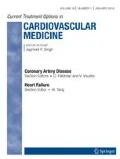Opinion statement
Control of hypertension is a well-established goal of the primary and secondary prevention of stroke. However, management of blood pressure in the setting of acute brain ischemia is complicated by the possible effect of blood pressure changes on cerebral perfusion. In acute stroke, patients may have an ischemic penumbra of brain tissue, which has impaired perfusion but which is not irreversibly damaged. The ischemic penumbra may be salvaged with reperfusion. Lowering of blood pressure in this setting, however, would hasten the progression of the penumbra to infarction. With the exception of patients treated with thrombolytic agents, blood pressure reduction is not recommended in acute ischemic stroke for this reason. Preliminary studies suggest that there may be a role for interventions to elevate blood pressure as a treatment for acute stroke patients. Despite interest in induced hypertension as a treatment of stroke dating back to the 1950s, this practice has not achieved widespread use owing to concerns about potential adverse effects such as intracerebral hemorrhage, cerebral edema, and myocardial ischemia. It is commonly used, however, to treat patients with threatened cerebral ischemia due to vasospasm after subarachnoid hemorrhage. Until future studies clarify the effectiveness of induced hypertension in stroke treatment, maintaining adequate blood pressure and fluid volume is recommended for patients with acute ischemic stroke, particularly if the neurologic deficits are fluctuating or the patient has persistent large-vessel occlusive disease.
Similar content being viewed by others
References and Recommended Reading
Strandgaard S, Olesen J, Skinhoj E, et al.: Autoregulation of brain circulation in severe arterial hypertension. BMJ 1973, 1:507–510.
Chillon JM, Baumbach GL: Autoregulation: arterial and intracranial pressure. In Cerebral Blood Flow and Metabolism, edn 2. Edited by Edvinsson L, Krause DN. Philadelphia: Lippincott Williams & Wilkins; 2002:395–412.
Heiss WD, Graf R, Wienhard K, et al.: Dynamic penumbra demonstrated by sequential multitracer PET after middle cerebral artery occlusion in cats. J Cereb Blood Flow Metab 1994, 14:892–902.
Astrup J, Siesjo BK, Symon L: Thresholds in cerebral ischemia-the ischemic penumbra. Stroke 1981, 12:723–725.
Heiss WD: Ischemic penumbra: evidence from functional imaging in man. J Cereb Blood Flow Metab 2000, 20:1276–1293.
Wallace JD, Levy LL: Blood pressure after stroke. JAMA 1981, 246:2177–2180.
Broderick J, Brott T, Barsan W, et al.: Blood pressure during the first minutes of focal cerebral ischemia. Ann Emerg Med 1993, 22:1438–1443.
Graham DI: Ischaemic brain damage of cerebral perfusion failure after treatment of severe hypertension. BMJ 1975, 4:739.
Fischberg GM, Lozano E, Rajamani K, et al.: Stroke precipitated by moderate blood pressure reduction. J Emerg Med 2000, 19:339–346.
Powers WJ: Acute hypertension after stroke: the scientific basis for treatment decisions. Neurology 1993, 43:461–467.
Bath FJ, Bath PMW: What is the correct management of blood pressure in acute stroke? The Blood Pressure in Acute Stroke Collaboration. Cerebrovasc Dis 1997, 7:205–213.
Leonardi-Bee J, Bath PM, Phillips SJ, et al.: Blood pressure and clinical outcomes in the international stroke trial. Stroke 2002, 33:1315–1320.
Interventions for deliberately altering blood pressure in acute stroke (Cochrane Review). Blood Pressure in Acute Stroke Collaboration (BASC) [no authors listed]. Cochrane Database Syst Rev 2002, (4):CD000039.
Caplan LR: Worsening in ischemic stroke patients: is it time for a new strategy? Stroke 2002, 33:1443–1445.
Astrup J, Symon L, Branston NM, et al.: Cortical evoked potential and extracellular K + and H + at critical levels of brain ischemia. Stroke 1977, 8:51–57.
Olsen TS, Larsen B, Herning M, et al.: Blood flow and vascular reactivity in collaterally perfused brain tissue. Evidence of an ischemic penumbra in patients with acute stroke. Stroke 1983, 14:332–341.
Shanbrom E, Levy L: The role of systemic blood pressure in cerebral circulation in carotid and basilar artery thromboses. Am J Med 1957, 23:197–204.
Farhat SM, Schneider RC: Observations on the effect of systemic blood pressure on intracranial circulation in patients with cerebrovascular insufficiency. J Neurosurg 1967, 27:441–445.
Wise G, Sutter R, Burkholder J: The treatment of brain ischemia with vasopressor drugs. Stroke 1972, 3:135–140.
Rordorf G, Cramer SC, Efird JT, et al.: Pharmacological elevation of blood pressure in acute stroke. Clinical effects and safety. Stroke 1997, 28:2133–2138.
Rordorf G, Koroshetz WJ, Ezzeddine MA, et al.: A pilot study of drug-induced hypertension for treatment of acute stroke. Neurology 2001, 56:1210–1213. Follow-up study from Rordorf et al. [20] of a prospective pilot trial of induced hypertension in a series of acute stroke patients.
Hillis AE, Barker PB, Beauchamp NJ, et al.: Restoring blood pressure reperfused Wernicke’s area and improved language. Neurology 2001, 56:670–672.
Baird AE, Warach S: Magnetic resonance imaging of acute stroke. J Cereb Blood Flow Metab 1998, 18:583–609.
Fisher M, Albers GW: Applications of diffusion-perfusion magnetic resonance imaging in acute ischemic stroke. Neurology 1999, 52:1750–1756.
Hillis AE, Ulatowski JA, Barker PB, et al.: A pilot randomized trial of induced blood pressure elevation. Effects on function and focal perfusion in acute and subacute stroke. Cerebrovasc Dis 2003, in press. A randomized trial of induced hypertension used in patients with evidence of an ischemic penumbra as demonstrated by diffusion-perfusion MRI. Treated patients improved clinically, and serial MRI studies demonstrated reduced size of perfusion defects.
Kassell NF, Peerless SJ, Durward QJ, et al.: Treatment of ischemic deficits from vasospasm with intravascular volume expansion and induced arterial hypertension. Neurosurgery 1982, 11:337–343.
Miller JA, Dacey RG, Diringer MN: Safety of hypertensive hypervolemic therapy with phenylephrine in the treatment of delayed ischemic deficits after subarachnoid hemorrhage. Stroke 1995, 26:2260–2266.
Author information
Authors and Affiliations
Rights and permissions
About this article
Cite this article
Wityk, R.J., Restrepo, L. Hypoperfusion and its augmentation in patients with brain ischemia. Curr Treat Options Cardio Med 5, 193–199 (2003). https://doi.org/10.1007/s11936-003-0003-2
Issue Date:
DOI: https://doi.org/10.1007/s11936-003-0003-2




